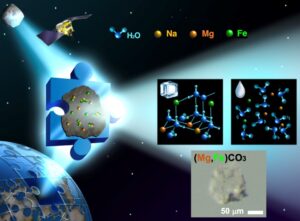Successful Observations Reveal Relationship between Shape of Pulsating Aurora and Energy of Electrons Precipitating from Geospace
Summary
A research group led by Yuri Ito, a master’s degree student at the Graduate School of Informatics and Engineering, University of Electro-Communications (currently a Project Researcher at Space and Upper Atmospheric Sciences Group, National Institute of Polar Research and a first-year doctoral student at the Graduate University for Advanced Studies), and Professor Keisuke Hosokawa of the Department of Computer and Network Engineering at the Graduate School of Informatics and Engineering, University of Electro-Communications, has revealed the relationship between the shape of “pulsating aurora,” electrons precipitating from the magnetosphere into the Earth’s atmosphere, which cause auroral emissions, and the “duct” structure of the electron density in the magnetosphere. The research group compared auroral emissions taken by all-sky cameras installed in Tromsø, Norway, the electron density in the upper atmosphere observed by an incoherent scatter radar, and waves and electrons observed by a satellite in space near the Earth’s “magnetosphere.”
Recent studies have suggested that, during pulsating auroras, in addition to electrons precipitating into the Earth’s atmosphere and causing auroras, more energetic electrons (relativistic electrons) also precipitate and lead to ozone depletion in the mesosphere and upper stratosphere. The present results will help visualize the spatial distribution of relativistic electrons in the geospace and clarify the precipitation mechanism of relativistic electrons in the Earth’s atmosphere.

Associate Professor Satoshi Kasahara and Assistant Professor Kunihiro Keika of the Department of Earth and Planetary Science participated in the presentation of the research results.
Please see the following link for details.
- Press Release, School of Science : https://www.s.u-tokyo.ac.jp/en/press/10510/














